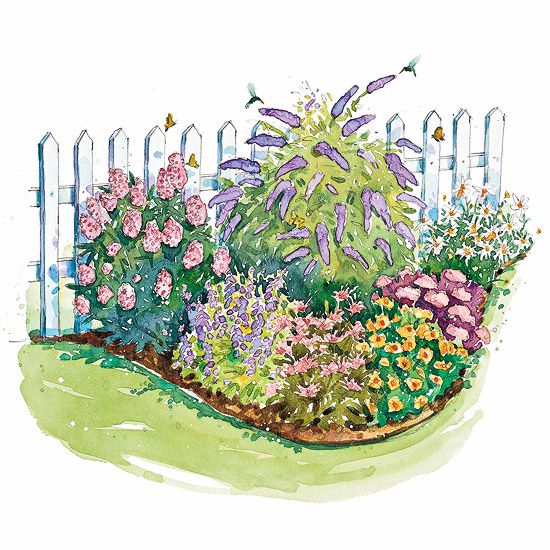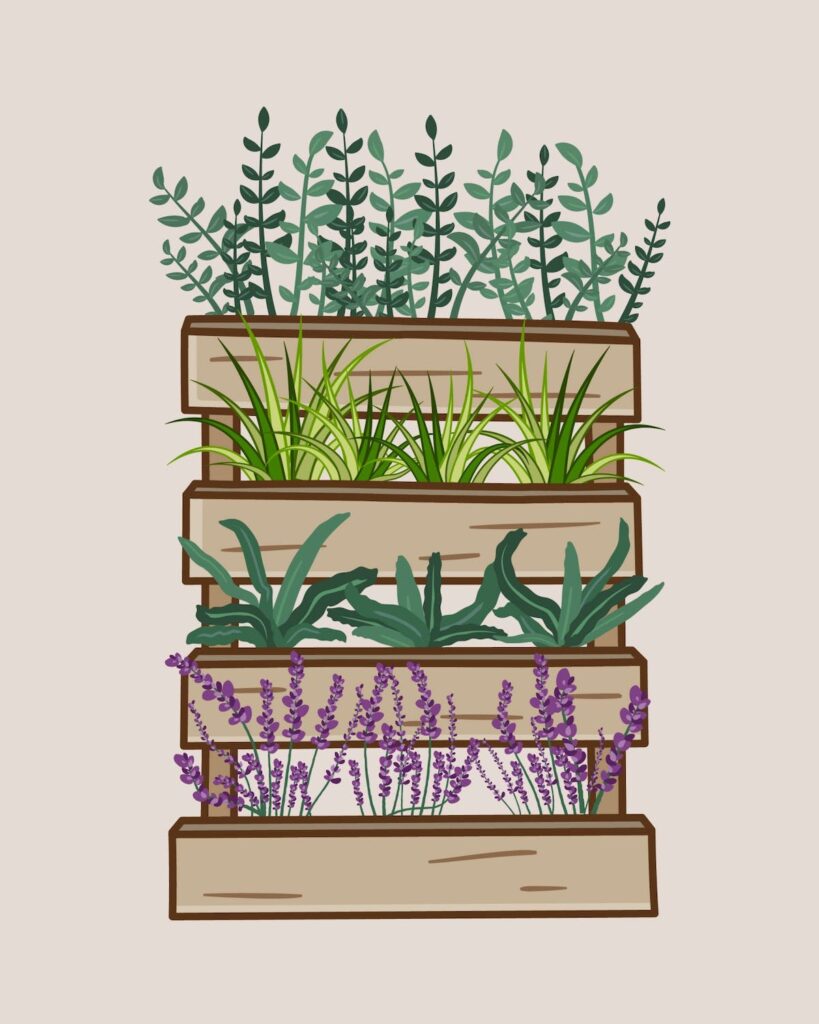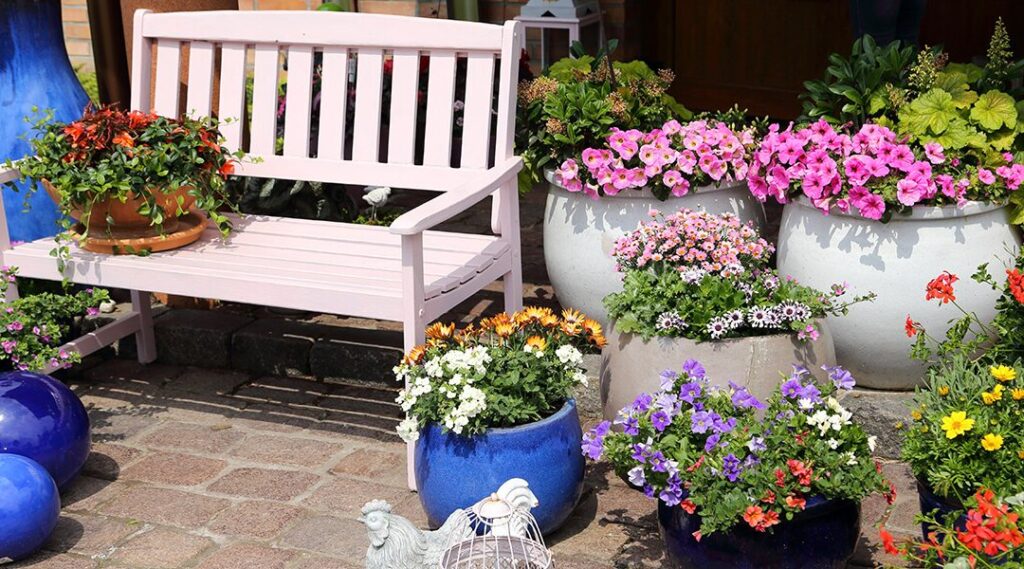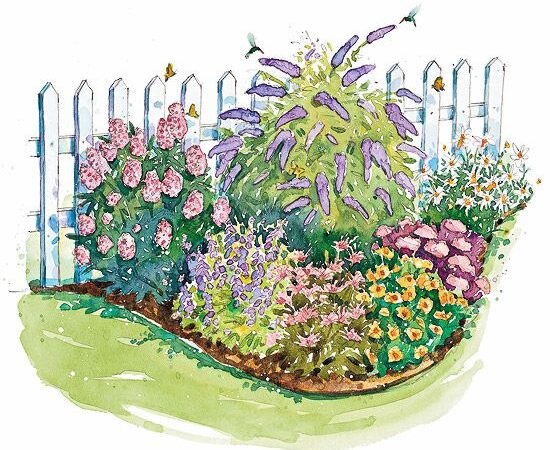
Gardening in small spaces can be a bit tricky, but don’t let that hold you back! Just because you have a tiny balcony or patio, doesn’t mean you can’t have a beautiful and functional garden. The key is to get creative and think outside the box.
One thing to keep in mind is to utilize vertical space. Instead of just having pots on the ground, try hanging planters on walls or fences. Not only will this add some interest to your space, but it’ll also free up some much-needed floor space. Another tip is to go for a specific theme or colour scheme. This will make your outdoor area feel cohesive and put-together.
Another thing to consider is to focus on smaller, compact plants. Dwarf varieties of flowers and vegetables are perfect for small spaces because they take up less room and are easier to take care of. A mini herb garden or a small collection of succulents could be a great option.
It’s also important to focus on functionality when gardening in small spaces. Think about what you want to get out of your garden and build around that. If you want a place to relax, try incorporating a small seating area and some potted plants. Or if you’re all about growing your own produce, focus on incorporating different types of vegetables or fruits.
All in all, don’t let a small outdoor space discourage you from gardening. With some creativity and smart planning, you can make the most of your space and have a beautiful and functional garden that you’ll love.
Vertical gardening

Alright, so let’s talk about vertical gardening! This is a great way to make the most of small outdoor spaces and add some interest to your garden. There are a few different ways to get started with vertical gardening, such as using wall-mounted planters, hanging baskets, and vertical trellises.
First up, wall-mounted planters. These are great because they allow you to grow plants without taking up any floor space. You can even use the wall as a natural trellis for climbing plants. One great option for a wall-mounted planter is a succulent wall garden. Not only do succulents look great, but they’re also easy to care for and perfect for small spaces.
Hanging baskets are another great option for vertical gardening. You can use a variety of plants in a hanging basket, from flowers to herbs to small fruits. One idea is to create a hanging herb garden, which will not only add some greenery to your space, but also make fresh herbs easily accessible for cooking.
Vertical trellises are also a great option for small spaces, especially if you have a sunny spot. A trellis is a great way to support climbing plants such as tomatoes, cucumbers, or beans. This will help to save on space and make it easy to harvest the fruit. When it comes to maintaining and caring for a vertical garden, one important thing to keep in mind is proper watering. Since the plants are in hanging baskets or wall-mounted planters, they may dry out more quickly, so make sure to keep an eye on the moisture level. Also, give enough attention to fertilising the plants and providing the right amount of light they need. With proper care and maintenance, your vertical garden will be thriving in no time!
Container gardening

Let’s dive into container gardening! This is another great option for those of us with small outdoor spaces. Container gardening allows you to have a variety of plants and flowers in a small area, and it’s also a great way to add some colour and interest to your space.
The first step in container gardening is choosing the right pots, planters, and containers. When space is limited, it’s important to choose containers that are the right size and shape for the space you have. Opt for smaller pots and planters, or even try using items you already have around the house, like old metal buckets or wine crates.
Another important thing to keep in mind is combining different plants and flowers in a container garden. This can be a great way to add interest and colour to your space. You can also play with textures, try combining different sizes and shapes of plants and flowers. One thing to keep in mind is to consider the light requirements of the plants you choose and group them accordingly, also think of the water and fertilizing needs of each plant when you are grouping them.
One last thing to keep in mind when creating a container garden is functionality. Think about what you want to get out of your garden, whether it’s herbs for cooking, flowers for cutting, or just some greenery to enjoy. Make sure to choose plants that will fit into your functional and aesthetic plan. In conclusion, container gardening is a great option for small spaces. Choosing the right pots and containers, as well as combining different plants and flowers, can make a huge difference in the overall look and feel of your garden. With a bit of planning and some creative thinking, you can create a container garden that is both beautiful and functional.
Raised bed gardening

Raised bed gardening is a great option for those of us with small outdoor spaces. A raised bed is a garden bed that’s built above the ground, which allows you to grow a variety of plants and vegetables even in limited space.
Creating raised beds in small spaces is a bit different than in larger spaces, but it’s possible. The first step is to decide where to put the beds, they can be placed in a patio, on a terrace or even on a balcony, if the raised bed have enough sunlight. Then, you’ll need to decide on the size and shape of the beds. Keep in mind that raised beds can be any size, shape or height.
When it comes to materials, you have a lot of options to choose from. Some popular materials for raised beds include cinder blocks, stones, or old bricks. These materials are durable and can add a rustic charm to your garden. Other options include wooden planks, concrete blocks or plastic raised bed kits. Each material has its own pros and cons, so it’s important to choose something that works for you and your space.
Once the bed is built and you’ve filled it with soil, you can start planting. Keep in mind that you’ll need to make sure the bed is accessible, meaning you’ll need to be able to reach all parts of the bed comfortably. Also, you will want to keep an eye on the soil moisture, since raised beds tend to dry out more quickly than ground-level gardens, you may need to water more often.
Small garden design

Designing a small garden can be a bit tricky, but with the right techniques, you can make the most of your space and create a beautiful outdoor oasis.
One important thing to keep in mind when designing a small garden is the use of focal points and focal areas. These are elements in your garden that draw the eye and create a sense of interest and drama. Focal points can be anything from a beautiful statue or piece of artwork to a unique plant or tree. Focal areas are designated zones within the garden that are dedicated to specific activities or functions.
Creating different “zones” within a small garden space is another great way to make the most of your space. This can include things like an outdoor dining area, a relaxing space, and even an outdoor work area. Each zone should be designated with a specific function and have specific elements that support that function.
Another way to make the most of a small garden space is by using lighting, color, and texture. This includes not only choosing the right plants, but also thinking about how the space will be lit at night and how different colours and textures can be used to create interest and depth.
One example of this is to use lighting to highlight different elements within the garden, like a tree, a statue or a water feature. This can help to create depth and interest even in a small space. You can also use colour to draw the eye and create a sense of movement, for example using a contrasting colour for focal points or for a zone boundary. Similarly, textures can be used to add visual interest and create a sense of depth. This can be done by adding elements like rough bark, smooth rocks or water feature.
Recap
One important thing to remember is to get creative and think outside the box when it comes to gardening in small spaces. Don’t be afraid to try new things, and don’t be discouraged if something doesn’t work out. Gardening is a process and should be enjoyed, don’t take it too seriously. Also, it’s important to use the resources you have, whether that’s a small balcony, a patio, or a rooftop. With a little bit of creativity, you can make the most of any space.
In conclusion, gardening in small spaces may present a challenge, but it doesn’t have to be daunting. Remember to have fun, enjoy the process and make the most of the resources available to you.

